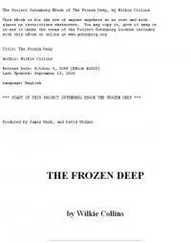“They must have noticed a spy earlier,” Vonnie said. “They were suspicious, and they wanted to make sure nothing bothered their retaining wall.”
“How are they processing so much detail in the rock?” Koebsch said. “We couldn’t do it without AI.”
“They’re wired differently.”
“They might not be as smart as you think, Von,” Dawson said.
“What?”
“They used to be intelligent,” Dawson said. “I can’t deny the carvings we’ve found. Those are written histories. But the carvings are ten thousand years old. These sunfish are just animals. We’re wasting our time trying to talk to them.”
“Bullshit,” Vonnie said. “Are you looking at the same transcripts I am?”
“Yes indeed.” William Dawson was in his seventies and their oldest crew member. Wrinkles spread from the corners of his eyes through his paper-fine skin, but his hair remained black, and he was spry and elflike.
Vonnie hadn’t spoken with him much. She felt blindsided by his announcement. “How can you think we should leave them down there to die?” she said.
“I don’t. Not at all. Perhaps our approach should change. We’ve spent five weeks pussyfooting around in hopes of talking to them. I submit that this is like attempting to chat with porpoises or seals.”
“Seals!”
“Porpoises may be a better comparison. I don’t know if you’ve seen the mem files on attempts to communicate with cetaceans in the twentieth century.”
“I have.” Vonnie had watched everything she could find on interspecies communication.
“Some marine biologists were convinced the whales were intelligent,” Dawson said. “The complexity of their songs was bewitching. Other people were obsessed with dolphins. They frittered away their careers proving themselves wrong.”
“They learned more than you think. Their work is part of the database we’re using now, but the whales never said anything like this.” Vonnie brought an excerpt from the newest sunfish translations onto the group feed and played it.
TOM: Hello.
PROBE 112: Hello / Yes.
TOM: I am Top Clan Two-Four, Pod Four.
ALL SUNFISH: I am Top Clan Two-Four, Pod Four.
ALL SUNFISH: Close / Too close.
TOM: You are too close / Hello.
“This supports my theory,” Dawson said. “The sunfish are pack animals, not individuals. Look at the group response. It’s imitative.”
“Hold on,” Pärnits said. “Repetition is a natural function of the way they communicate. They can only hear the shapes they detect in any given sonar pulse. Of course they repeat the same information. It’s like a circle or a chain. They confirm and reconfirm until every member in the group acknowledges the message. Their speech patterns are more fluid than human conversation.”
“It’s obviously language,” Vonnie said. “They use numbers and names.”
Dawson’s smile was condescending. “You’re the one who’s given them names,” he said. “All I’ve seen is the same limited repertoire of shapes repeated over and over.”
Vonnie glared. It was true that she and Metzler had tried to personalize the sunfish, but she refused to concede the point. “The sunfish always begin with the same shapes because they’re at war with each other,” she said. “Their priority is to announce their claim to their area.”
“Indeed. It’s a territorial response.”
“He said ’I’m Top Clan Two-Four, Pod Four.’”
“They all said it. It’s not intentional, Von.”
“The sunfish NASA found said they were Top Clan Four-Eight, Pods Two and Six. They’re organizing themselves by tribes, then by squads.”
“Are they?” Dawson asked. “The AI is assigning identifiers like ’clan’ and ’pod’ for our benefit, and not with a lot of confidence. Check the scores. The AI won’t guarantee the accuracy of our transcripts. Most are ranked lower than seventy percent.”
True again , she thought. Their AIs had interpreted the sunfishes’ carvings with a fair amount of certainty, but following the shape-based language in real time was a work in progress. Too much of it was open to guesswork.
“The sunfish appear to use their pronouns interchangeably,” Dawson said. “’I,’ ’we,’ ’ours,’ ’mine’ — there’s no differentiation. Their arm shrugs may not be counting at all. I don’t dispute that the manner in which they show ’eight’ or ’four’ is unique to each group, but those postures look like displays of conformity and aggression to me.”
“Then they’ll keep destroying our probes,” Koebsch said.
“An animal doesn’t learn, it merely reacts,” Dawson said. “That’s why every encounter is the same. I’m grateful for the data brought to us by NASA and our own probes, but I question if we can afford to let the sunfish keep smashing mecha.”
You bastard, she thought. You despicable, pretentious bastard.
Why was he doing this? Because it would put him at the forefront of the academic debate and the latest news feeds? Dawson didn’t care how much money the ESA spent on probes and spies. Like the Brazilians, he wanted to generate his own notoriety and enjoy its rewards.
“Granted, the sunfish have extraordinary ratios of brain to body mass,” he said. “Their ratio is actually greater than ours. But with eight arms, too much of their brain mass is dedicated to motor control. An elephant uses a considerable portion of its brain to operate its trunk. We use much of ours to operate our fingers and arms. The sunfish developed enough brain mass to gain sentience for a time, but their undoing was their need for multi-sensory input. Allow me to demonstrate.”
Accessing the group feed, Dawson opened a sim of a sunfish brain. It had two hemispheres like a human brain, although it was flatter and wider.
Dawson highlighted several internal structures.
“Here is an olfactory cortex,” he said. “Here is an auditory cortex. Here is a second auditory cortex, and this is no less than a third auditory cortex.”
“So what?” Vonnie said impatiently.
“So in addition to the scent-and-taste organ of their tube feet and their ability to use broadband sonar calls in atmosphere environments, the sunfish are also capable of generating and processing narrow-band high frequency clicks underwater. That’s why they possess these cartilage nares beside their larynx. It’s why these fatty lobes share the same nerve bundles as their cochleae. The lobes are for echolocation.”
“I’ll say it again — so what?”
Dawson smiled at her, unperturbed. “The sunfish also possess a shark-like ability to perceive bioelectrical impulses and subtle changes in temperature and pressure. The tiny pores commingled with their pedicellaria can sense living creatures, even those hiding behind rock or underwater. That’s how they followed you no matter what you tried, Von. They sensed your body through your suit.”
“Impossible,” Frerotte said. “Scout suits are insulated plastisteel.”
“The sunfish have had to become remarkably sensitive to find prey in the ice,” Dawson said. “Perhaps they reacted to the suit itself. Sharks were known to attack phone cables in the earliest years of telecommunications. One of the suit’s systems could have attracted them, but I think not. You were hurt. Wounded creatures emit stronger signals than normal as the electrical activity controlling their heart rate and respiration increases.”
Vonnie felt her face lose its color. Her memories of screaming and killing would always be with her, and Dawson had unlocked that terror with a few words.
Читать дальше












